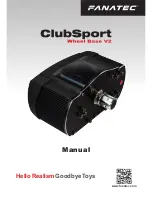
Product description
Page 29
All item Servo Positioning Controller C Series devices have the following features:
Space-saving compact design, directly cascadable
High quality of control due to extremely high-quality sensor technology, far superior to conventional market standards, and
better than average computer resources
Complete integration of all of the components for the controller and power module, including USB, Ethernet, and RS232 for
the PC communication, plus CANopen for the integration into automation systems
SD card: support of FW downloads (initialisation via boot switches) and uploads and downloads of parameter sets
Integrated universal encoder evaluation for the following encoders:
Resolver
Incremental encoder with/without commutation signals
High-resolution Stegmann incremental encoders, absolute encoders with HIPERFACE
®
High-resolution Heidenhain incremental encoders, absolute encoders with EnDat
Compliance with current European regulations and associated standards without any additional external measures
Device design as per UL standards, cULus certified
Completely closed, EMC-optimized metal housing for mounting to conventional control cabinet plates. All devices comply with
the IP20 degree of protection
Integration of all filters to fulfil the EMC regulations (industrial) inside the device, for example line filter, motor output filter, filter
for 24 V-supply as well as inputs and outputs
Integrated brake resistor. External resistors can be connected for higher braking energies
Automatic identification of externally connected brake resistors
Complete galvanic separation of controller and power output stage as per EN 61800-5-1. Galvanic separation of the 24 V
potential area with the digital inputs and outputs, analog electronics and the controller electronics
Operation as speed controller, torque controller or positioning controller
Integrated positioning control with wide range of functions as per CAN in Automation (CiA) DSP402 and numerous additional
application-specific functions
Jerk limit or time-optimal positioning relative or absolute to a point of reference
Point-to-point positioning (with or without S-ramps)
Speed and angle synchronisation with electronic gear system via incremental encoder input or fieldbus
Extensive modes of operation for synchronisation
Various methods for homing
Jogging
Teach-in mode
Short cycle times, in current control circuit 50 µs (20 kHz), in speed control circuit 100 µs (10 kHz)
Switchable clock frequency for the power output stage
Freely programmable I/O‘s















































